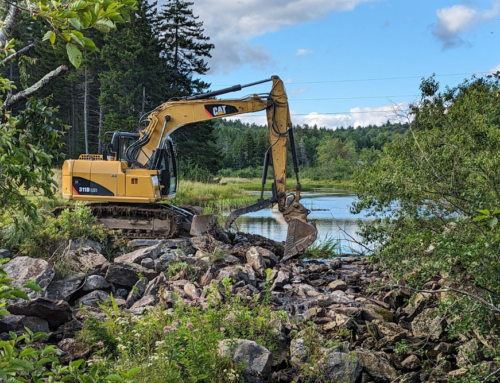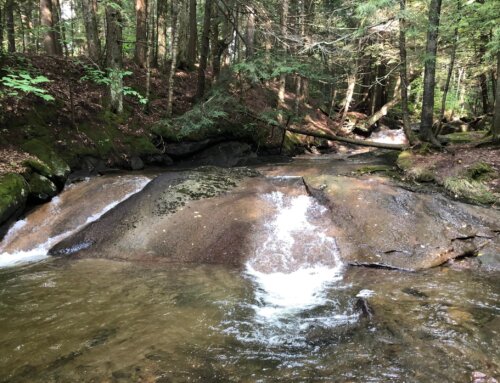On September 1, 2019, at the Barnhardt Manufacturing plant in Colrain, MA, a 4,500-gallon metal storage tank developed a hole and released sulfuric acid. The manufacturing plant bleaches and manufacturers non-woven cotton products. The leaking acid sprayed over a concrete containment dike, seeped into the ground, and flowed into the North River. The event drew attention in the local news because it resulted in a fish kill reported by local residents. Later in September, CRC sent an email to Massachusetts Department of Environmental Protection (MassDEP) and MassWildlife, raising a number of concerns and requesting information.
CRC received a copy of a letter from MassWildlife to Barnhardt documenting that the acid released by Barnhardt resulted in the killing of fish, amphibians (frogs), and invertebrates (crayfish), including State-listed species. MassDEP has not released any public information about enforcement as of January 2020. However, the acid release triggered a number of activities under the Massachusetts Contingency Plan, and several documents are publicly available in MassDEP’s Reportable Release File Viewer, using Release Tracking Number: 1-20919.
Through the publicly available documents, CRC has learned:
- Barnhardt hired Gregory Morand of Omni Environmental Group, LLC to act as the Licensed Site Professional (LSP) to develop the immediate response plan for MADEP.
- Omni Environmental’s conservative estimate of the amount of 93% sulfuric acid released is 60 gallons.
- On September 1, 2019, a total of approximately 170 pounds of neutralizing agent (sodium bicarbonate) was applied to impacted soils.
- A total of six (6) 55-gallon drums of sulfuric acid impacted soils were removed through excavation activities and temporarily staged on-site pending off-site disposal.
- Soil tests were done of the remaining soil and these were considered neutral. Visual surveys were done downstream and there was no ongoing fish kill in mid-September.
- The faulty 4,500-gallon above-ground storage tank (AST) was pumped out. In early October, acid-contaminated sludge in the retaining area was neutralized, removed, and disposed of. The tank was then removed using a crane.
- In late October, the containment dike was neutralized and demolished. Soil testing in the area of the former containment dike resulted in about 20 cubic yards of additional soil removed and disposed of.
- The drainage swale was rebuilt.
- Residual sulfuric acid remains in subsurface soils. Omni Environmental will be evaluating this before the end of March 2020, and more activities may be planned.
While we don’t know where the neutralized sulfuric acid is now being stored, or what the company plans for future sulfuric acid storage, CRC is glad that the faulty tank and containment wall have both been removed. It appears that Barnhardt’s follow-up work has been thorough.
However, enforcement should be proportionate to the terrible ecological impact of the spill. We will continue to monitor this situation until it is properly resolved.
PHOTO: Historic public file of fish kill in Groveton, NH circa 1970.







